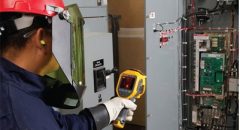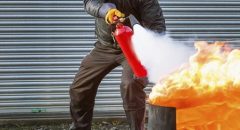Dust Explosion: Causes, Risks & Prevention
A simple guide to understanding dust explosions, how they happen, who is at risk, and ways to stay safe
What Is a Dust Explosion?
Definition of a dust explosion
A dust explosion happens when tiny particles of a material float in the air, catch fire, and create a sudden, powerful burst.
How combustible dust differs from ordinary dust
Normal dust usually just sits there and is harmless. Combustible dust can burn quickly and explode when mixed with air.
The “dust explosion pentagon” of required elements
For a dust explosion to happen, five things must come together: fuel (dust), heat or spark, oxygen, the dust being spread in the air, and a confined space.
How Dust Explosions Occur
Dispersion, fuel, ignition, oxygen and confinement in sequence
First, dust spreads in the air. Then a spark or heat source ignites it. Oxygen fuels the fire, and a closed space makes the pressure build, causing an explosion.
Primary vs secondary explosion dynamics
A small first explosion can kick up more dust, causing a bigger, more dangerous second explosion.
Industry-specific triggers and case examples
Different industries have different risks. Sparks from machines, friction, static electricity, or overheated equipment can trigger explosions. Factories that work with metal, grain, or flour have seen real-life accidents because of this.
Materials & Industries at Risk
Common combustible dust materials (metals, food, wood, plastics)
Dust from sugar, flour, wood, plastic, or metals like aluminum can all explode if conditions are right.
High-risk processes and environments (grain, coal, metalworking, food processing)
Factories handling grain, coal, metal powders, or flour are especially at risk because they produce lots of dust.
Hidden accumulation zones and overlooked hazards
Dust often hides in places people don’t check, like ceiling beams, ducts, or high shelves. If it builds up, it can fuel an explosion.
Consequences of Dust Explosions
Human injury, fatalities and structural damage
Dust explosions can hurt or kill people and destroy buildings.
Economic impact and business continuity risks
Explosions also cost a lot of money, stop work, and can cause companies to lose business.
Secondary explosion effects and cascade failure
Sometimes, the first explosion spreads dust, causing bigger explosions that can destroy more of the building.
Prevention & Control Measures
Dust hazard assessment and monitoring protocols
Factories should check where dust could be dangerous, measure it, and keep track of risky areas.
Engineering controls: ventilation, dust collection, explosion-proof equipment
Machines that suck up dust, vents that release pressure safely, and special spark-proof equipment help prevent explosions.
Administrative, training and maintenance strategies
Workers should be trained, machines checked regularly, and cleaning done often, especially in hidden areas.
Regulatory frameworks and standards
Laws and safety rules help factories stay safe. Following these rules makes explosions less likely.
Emergency Response & Mitigation
Detecting ignition and initiating timely shutdowns
Sensors can detect sparks or heat, and automatic systems can shut down machines to prevent an explosion.
Designing for overpressure, venting and explosion isolation
Buildings can have vents and special designs to reduce pressure and stop explosions from spreading.
Post-event recovery and lessons learned
After an explosion, factories should investigate why it happened, fix problems, and make sure it doesn’t happen again.
Conclusion & Call to Action
Summary of key preventive insights
Dust explosions happen when dust, heat, oxygen, spread, and confinement come together. Preventing any one of these stops the explosion.
Importance of proactive safety audits
- Regular checks and cleanups catch problems before they become dangerous.
- Contact Aura Safety & Risk Consultant Expert in industrial dust explosion prevention. Experts can help factories find and fix dust hazards before accidents happen.
- Call Now: 9999402106 for consultation and safety compliance support
Get help today to protect your workers and property from dust explosions.
Get free a quote
Submit your Details
+91 99994 02106
What we offer
Our Services
Identify, evaluate, and control process hazards with expert risk assessments, ensuring safe, reliable, and compliant industrial operations.

Identify, evaluate, and control process hazards with expert risk assessments, ensuring safe, reliable, and compliant industrial operations.

Implement site safety plans, audits, and training to prevent accidents, ensuring safer construction environments and regulatory compliance.

Design, engineer, and audit fire protection systems ensuring reliable performance, asset safety, and adherence to national safety standards.

Empowering workforce with certified HSE, fire, and industrial safety training programs for skill development and regulatory competence.

Create immersive, interactive VR safety training modules for realistic learning experiences in hazard recognition and emergency preparedness.
How it works
Industry Consultation
Project Scoping & Industry Brief
Service Selection
Site Visit & Inspection
Audit & Analysis
Report Submission & Discussion
Frequently Ask Question
A sudden burst is caused when tiny dust particles catch fire in the air.
Factories that handle grain, flour, sugar, wood, plastics, or metal powders
A bigger explosion is caused when the first blast kicks up more dust.
Dust buildup fuels explosions, so cleaning removes the fuel.
Yes, rules and standards tell factories how to prevent explosions.
Dust collectors, ventilation, spark-proof machines, and safety vents.
Investigate, fix problems, train workers, and improve safety controls.
